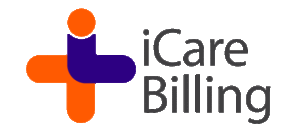8 Ways on How to Collect Deductibles from Patients
Often healthcare providers think about the ways on how to collect deductibles from patients. You must have a proper procedure in place to help you collecting copays and deductibles from patients in an efficient way. Collecting patient deductibles can be challenging when you do not know the insurance annual deductible. In the situation of not having a mechanism to check the eligibility and benefits verification, it often led to a question when should copayments and deductibles be collected from patients?
Medical Billing Companies often put their efforts on healthcare claims insurance collections, but they do not have a mechanism to actively follow up on patient collection. This creates an important need for good practice management software comes in that has certain features to not only support Medical Billing tasks but also could focus on collecting the balances from patients. Having the best medical billing company by your side helps you to improve healthcare practices workflow and align your medical billing and collection process to maximize cash flow and improve collection.
1. Inform Patients about their Deductible at the Beginning of the Year
It’s important for the healthcare practice staff members to have knowledge that when the new year start, there would be higher chances that the patient insurance plan’s deductible has not been met. Annual deductible plans are being renewed at the start of the new year so the staff member should share this information with patients who are not up to date with insurance policies. This will help patients to know their financial responsibility in advance rather than getting bills for deductible and getting surprised about that. Early access to information helps them to plan ahead on how to pay the deductible.
2. Verify Patient Plan Benefits Before Date of Service
Medical Billing Software allows you to check the patient benefits online to verify the plan benefits, total deductible, how much deductible has been met or paid by the patient, and remaining amount as well as out of pocket maximum. These details help you to inform patients about their coverage benefits so they know that they have to pay upfront or make a commitment to pay later but one way or other, the patient would have to pay the cost. This helps them to get mentally ready and manage their finances effectively.
3. Inform Patients about their Estimated Upfront Medical Bill Cost
Helping your patient to calculate the estimated cost of medical illness and the cost they could end up paying after their healthcare claim is processed by the insurance company would help you in collecting copay and deductibles from patients. Collecting deductibles from patients is more like having a transparent and genuine conversation with clients about their financial responsibility.
4. Collect Deductibles from Patient at the Date of Service
If you ask, when should copayments and deductibles be collected from the patient? the right answer should be at the time of service. Collecting patient deductibles at the front desk when the patient visits your office help you to save time, improve the cash flow of your practice and reduce the cost of patient statement mailing cost or e-statement cost or further medical practice overhead cost such as engaging your practice staff member to call patients for the follow-up. This would also help you to improve your overall medical billing and collection process to get increased revenue.
5. Make Healthcare Deductible SOP (Standard Operating Procedure) for Collections
Making a policy for not only the deductible but for other patient responsibilities such as copayment, coinsurance, non-covered services under the patient’s plan, and tapping on the out-of-pocket maximum helps you to be more organized. Healthcare practices that have the standard procedure and having that shared with patients through the website or other media help your patient go on a procedure to make regular payment without any delay and making any excuses.
6. Offer Convenience of Payment
In an effort of collecting copays and deductibles from patients, you must offer the most convenient way to the patients so they can find it easy to make a payment. If patients find it difficult to make payment through regular checks mailing out, it would be hard for them to spare some time for this task. Your healthcare practice should have payment integration with leading payment gateways and offer multiple ways to make a payment.
7. Provide Flexible Patient Payment Plans
When thinking about the ways of collecting deductibles from patients, you must think like a patient. Some patients cannot pay the whole amount at once and they need a flexible payment plan to make all the payments. Your healthcare practice should have a policy on how to collect deductible from patient and offer your patients more flexibility so they can find it easy and not a financial burden on their paychecks.
8. Educate Patients about Healthcare & Medical Bills and their Responsibilities.
Use your newsletter and blog post to share insight about when should copayments and deductibles be collected from patients by the healthcare offices. When your patient will have more relevant information about the process, their patient plan, your practice SOPs about collecting patient deductibles they will be more responsive, and you will get your patient payments more frequently.
Looking for Best Medical Billing Companies?
If you need Best Medical Billing Services for your healthcare practice, Contact Us today and talk to a Medical Billing Specialist about your needs. We can help you to find an innovative way to choose the Best Medical Billing Solution for your practice to thrive in your business career.



